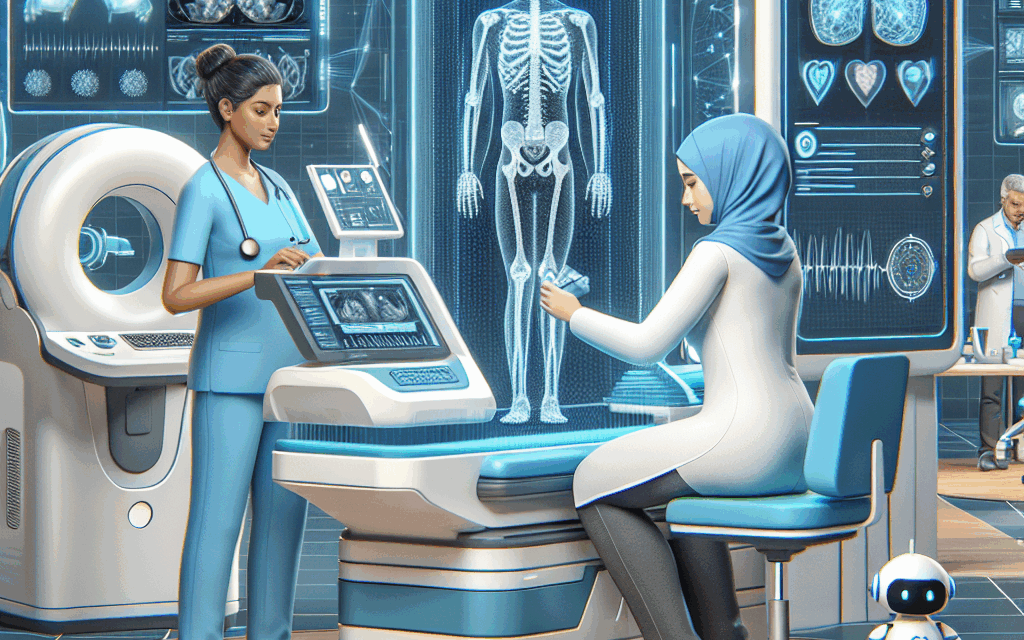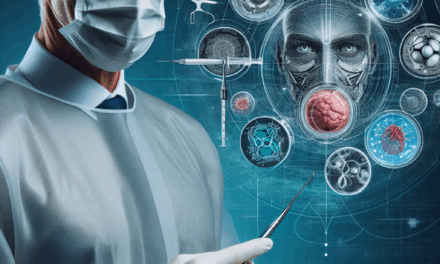Innovative AI Approaches Revolutionizing Healthcare Delivery
The healthcare industry is undergoing a transformative shift, driven by the rapid advancement of artificial intelligence (AI) technologies. These innovations are not only enhancing patient care but also streamlining operations, reducing costs, and improving outcomes. This article explores five key areas where AI is revolutionizing healthcare delivery: predictive analytics, personalized medicine, robotic surgery, telemedicine, and administrative automation. Each section delves into the current state of AI applications, their implications for healthcare providers and patients, and real-world examples that illustrate their impact.
1. Predictive Analytics: Anticipating Patient Needs
Predictive analytics in healthcare involves using AI algorithms to analyze vast amounts of data to forecast patient outcomes and needs. By leveraging historical data, machine learning models can identify patterns that help healthcare providers make informed decisions about patient care.
One of the most significant applications of predictive analytics is in the management of chronic diseases. For instance, AI can analyze data from electronic health records (EHRs), wearable devices, and social determinants of health to predict which patients are at risk of complications. This proactive approach allows healthcare providers to intervene early, potentially preventing hospitalizations and improving patient outcomes.
- Case Study: Diabetes Management – A study published in the journal *Diabetes Care* demonstrated that an AI-driven predictive model could identify patients at high risk of developing diabetes-related complications. By implementing targeted interventions based on these predictions, healthcare providers reduced hospital admissions by 30%.
- Emergency Room Optimization – AI algorithms can predict patient inflow in emergency departments, allowing hospitals to allocate resources more effectively. For example, a study at a major urban hospital found that using predictive analytics reduced wait times by 20% and improved patient satisfaction scores.
Moreover, predictive analytics can enhance population health management by identifying trends in disease outbreaks or health risks within specific communities. By analyzing data from various sources, including public health records and social media, AI can help public health officials respond more effectively to emerging health threats.
Despite its potential, the implementation of predictive analytics in healthcare faces challenges, including data privacy concerns and the need for high-quality data. However, as technology continues to evolve, the integration of predictive analytics into routine clinical practice is expected to grow, ultimately leading to more proactive and personalized patient care.
2. Personalized Medicine: Tailoring Treatments to Individuals
Personalized medicine, often referred to as precision medicine, is an approach that tailors medical treatment to the individual characteristics of each patient. AI plays a crucial role in this field by analyzing genetic, environmental, and lifestyle factors to determine the most effective treatment options.
One of the most promising applications of AI in personalized medicine is in oncology. Machine learning algorithms can analyze genomic data to identify mutations that drive cancer growth. This information allows oncologists to select targeted therapies that are more likely to be effective for specific patients.
- Case Study: Genomic Profiling – A landmark study published in *Nature* demonstrated that patients with advanced cancer who received treatment based on genomic profiling had a significantly higher response rate compared to those who received standard therapies. The use of AI to analyze genomic data enabled clinicians to make more informed treatment decisions.
- Pharmacogenomics – AI can also predict how patients will respond to certain medications based on their genetic makeup. For example, a study in *The New England Journal of Medicine* found that AI algorithms could accurately predict adverse drug reactions in patients, leading to safer prescribing practices.
Furthermore, AI-driven tools are being developed to analyze patient data in real-time, allowing for dynamic adjustments to treatment plans. For instance, wearable devices can monitor patients’ vital signs and provide feedback to healthcare providers, enabling timely interventions when necessary.
While personalized medicine holds great promise, it also raises ethical considerations, particularly regarding data privacy and the potential for genetic discrimination. As the field continues to evolve, it will be essential to establish guidelines that protect patients’ rights while promoting innovation in personalized healthcare.
3. Robotic Surgery: Enhancing Precision and Reducing Recovery Times
Robotic surgery is revolutionizing the way surgical procedures are performed, offering enhanced precision, reduced invasiveness, and quicker recovery times. AI technologies are integral to the development and operation of robotic surgical systems, enabling surgeons to perform complex procedures with greater accuracy.
One of the most notable robotic surgical systems is the da Vinci Surgical System, which allows surgeons to perform minimally invasive surgeries using robotic arms controlled by a console. The system provides a 3D view of the surgical site and translates the surgeon’s hand movements into precise actions of the robotic instruments.
- Case Study: Prostatectomy – Research published in *JAMA Surgery* found that patients undergoing robotic-assisted prostatectomy experienced less blood loss, shorter hospital stays, and faster recovery times compared to those who underwent traditional open surgery. The precision of robotic systems minimizes damage to surrounding tissues, leading to better outcomes.
- AI-Assisted Surgical Planning – AI algorithms can analyze preoperative imaging data to assist surgeons in planning complex procedures. For example, a study in *Surgical Endoscopy* demonstrated that AI could predict the optimal surgical approach for patients undergoing laparoscopic surgery, improving surgical outcomes.
Moreover, AI is being used to enhance the training of surgeons. Virtual reality (VR) simulations powered by AI can provide realistic training environments for surgical residents, allowing them to practice techniques before performing on actual patients. This approach not only improves surgical skills but also enhances patient safety.
Despite the advantages of robotic surgery, challenges remain, including high costs and the need for specialized training. However, as technology advances and becomes more accessible, robotic surgery is expected to become a standard practice in various surgical specialties.
4. Telemedicine: Expanding Access to Care
Telemedicine has gained significant traction in recent years, particularly during the COVID-19 pandemic, as healthcare providers sought to maintain continuity of care while minimizing the risk of virus transmission. AI technologies are enhancing telemedicine by improving patient engagement, streamlining workflows, and enabling remote monitoring.
AI-powered chatbots and virtual assistants are increasingly being used to triage patients and provide health information. These tools can assess symptoms, recommend appropriate care options, and even schedule appointments, reducing the burden on healthcare providers.
- Case Study: Virtual Health Assistants – A study published in *Health Affairs* found that patients who interacted with AI-driven virtual health assistants reported higher satisfaction levels and were more likely to adhere to treatment plans. These tools provide timely information and support, empowering patients to take an active role in their healthcare.
- Remote Patient Monitoring – AI technologies are also being used to monitor patients with chronic conditions remotely. For instance, wearable devices can track vital signs and send alerts to healthcare providers if abnormalities are detected. A study in *The Lancet* demonstrated that remote monitoring reduced hospital readmissions for heart failure patients by 25%.
Furthermore, AI can analyze data from telemedicine consultations to identify trends and improve care delivery. By examining patient interactions, healthcare organizations can gain insights into common concerns and adjust their services accordingly.
While telemedicine offers numerous benefits, challenges such as regulatory barriers, reimbursement issues, and concerns about data privacy must be addressed. As the healthcare landscape continues to evolve, telemedicine is likely to play an increasingly important role in expanding access to care and improving patient outcomes.
5. Administrative Automation: Streamlining Healthcare Operations
Administrative tasks in healthcare, such as billing, scheduling, and claims processing, can be time-consuming and prone to errors. AI technologies are being leveraged to automate these processes, allowing healthcare providers to focus more on patient care and less on administrative burdens.
AI-driven automation tools can streamline scheduling by analyzing patient data and preferences to optimize appointment times. This not only improves patient satisfaction but also enhances operational efficiency.
- Case Study: Automated Billing Systems – A healthcare organization that implemented an AI-powered billing system reported a 40% reduction in billing errors and a 30% decrease in the time spent on claims processing. This automation allowed staff to redirect their efforts toward patient care rather than administrative tasks.
- Predictive Scheduling – AI algorithms can predict patient no-show rates based on historical data, enabling healthcare providers to adjust their schedules accordingly. A study in *Health Services Research* found that predictive scheduling reduced no-show rates by 15%, leading to more efficient use of resources.
Moreover, AI can assist in compliance and regulatory reporting by automating data collection and analysis. This reduces the risk of human error and ensures that healthcare organizations remain compliant with ever-changing regulations.
While the benefits of administrative automation are clear, challenges such as workforce resistance and the need for robust data security measures must be addressed. As AI technologies continue to advance, the potential for streamlining healthcare operations will only increase, ultimately leading to improved patient care and organizational efficiency.
Conclusion: The Future of AI in Healthcare Delivery
The integration of AI technologies into healthcare delivery is revolutionizing the industry, offering innovative solutions that enhance patient care, streamline operations, and improve outcomes. From predictive analytics that anticipate patient needs to personalized medicine that tailors treatments to individuals, the potential of AI is vast and transformative.
As we have explored in this article, the applications of AI in healthcare are diverse and impactful:
- Predictive analytics is enabling proactive interventions for chronic disease management.
- Personalized medicine is tailoring treatments based on genetic and lifestyle factors.
- Robotic surgery is enhancing precision and reducing recovery times.
- Telemedicine is expanding access to care and improving patient engagement.
- Administrative automation is streamlining operations and reducing administrative burdens.
While challenges remain, including ethical considerations and the need for high-quality data, the future of AI in healthcare is promising. As technology continues to evolve, it will be essential for healthcare providers, policymakers, and stakeholders to collaborate in harnessing the full potential of AI to improve healthcare delivery for all.





